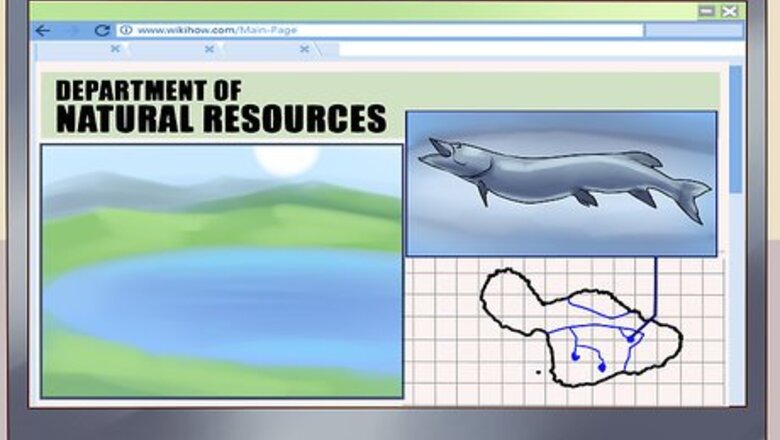
views
X
Research source
Choosing the Time and Location

Select a body of water to fish. In general, muskies are cold-water fish. They are found as far south as Tennessee and as far north as Northern Ontario. As secretive as muskie anglers can be with their honey holes, there are many ways to determine whether these fish swim in your body of water. Perhaps most reliable is to use your state or province’s Division of Natural Resources. Also check local fishing forums, clubs, and bait shops. Go to the Division of Natural Resources’ website for the state you plan to fish in. You should be able to find local bodies of water, such as lakes and creeks, where muskellunge can be found, as well as reservoirs that stock them.
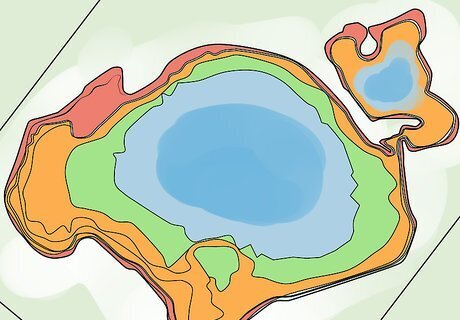
Choose a location within the body of water. Muskie water can be daunting to analyze. These fish live in lakes that are frequently thousands of acres, and knowing where to start can be a challenge. Being familiar with migratory patterns is therefore critical. Look up the current water temperature for the body of water you’ve selected. From the initial thaw through early spring, when water temperatures range from the upper 40s to low 50s Fahrenheit (about 7 to 12 degrees Celsius), focus on the shallowest parts of the lake. Once water temperatures reach the mid-50s Fahrenheit (about 13 Celsius), fish in depths of five to twelve feet. At 70 degrees Fahrenheit (21 Celsius), focus on the fish’s summer homes: deeper structures, such as deep weed beds, submerged rock piles and timber. In autumn when the water dips back into the 60s and 50s Fahrenheit (10 to 20 Celsius), fish in the shallows where there are schools of prey, such as shad, perch, and whitefish. When the water cools to the 40s and 30s Fahrenheit (-1 to 9 Celsius), fish in deeper water where muskies reside throughout the frozen months. This is often when you can catch the largest fish.
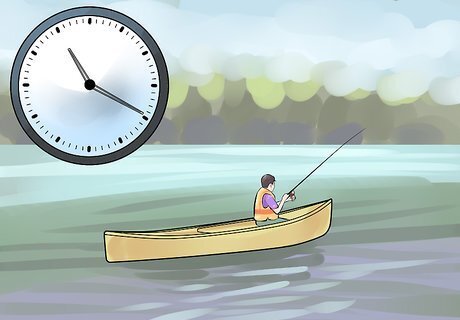
Pick a time to fish. The adage of fishing at the “crack of dawn” is not entirely true. Like all fish, muskies cold blooded, and so their body temperature is a direct product of their environment. As a result, in early spring and late fall periods, muskie are actually most active during the warmest hours of the day when the sun is directly overhead. During the warmest months of the year, the opposite is true, and muskies find their most ideal hunting temperatures at dusk and dawn.

Choose the day. If you fish during the daytime, choose a day with a new or full moon. If you’ll be fishing at night, pick a night with a full moon. Solunar calendars have been developed for muskie fishing for years, establishing that fishing during these moon phases are an advantage for anglers.

Create a repeatable pattern. Many successful muskie anglers keep a running log of fish seen and fish caught. Using either a map or a GPS system, keep track of the day, time, and location of each muskie encounter to generate a reproducible seasonal pattern. As seasons pass, add new spots to your log. Over time a body of water can essentially become an algorithm, where you need only to plug in the conditions and season to know where you should fish.
Selecting Your Equipment
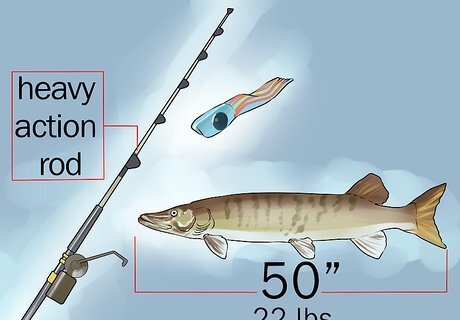
Choose a rod and reel. Use heavy tackle. Adult muskellunge can grow in excess of 50 inches and 50 lbs (22.7 kg). Try heavy action rods from seven to nine feet long. Pair a muskie rod with a large bait-casting reel, preferably in a fast gear ratio, to allow “catching up” to fast-moving fish. Heavy action rods have the backbone to not only fight such a large fish, but also to cast the jumbo-sized lures used to target muskies.
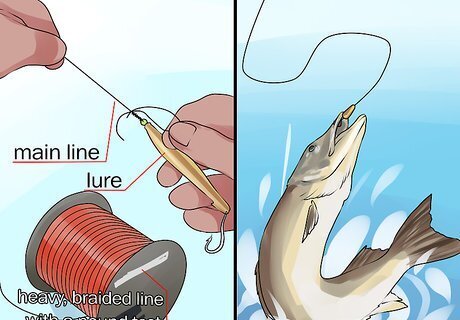
Select line. The higher a line’s “pound test” is, the stronger the line will be. In order to prevent line breaks and missed fish, use heavy, braided line with a pound test between 80 and 100. Because muskies have such sharp teeth, connect the main line to the lure with either a steel or heavy fluorocarbon leader.

Pick a lure size. The variety of muskie lures available can be overwhelming. Muskies are notorious predators who eat nearly every other freshwater fish in their waters, other muskies, frogs, and even rodents. In general, don’t be intimidated by using baits that seem absurdly large. Muskies frequently prey on fish 25%-50% their length, so using 8-12” lures is well within reason. Keep in mind that these fish are cold-blooded, and so their activity level is determined heavily by the season and water temperatures. In colder water, fish are more sluggish. Select small baits such as rattle traps and crank baits. In more ideal water temperatures, from the 60s to the low 70s in Fahrenheit (15.5°C to just above 21°C), fish are much more active. Use larger baits such as rubbers and swimbaits.
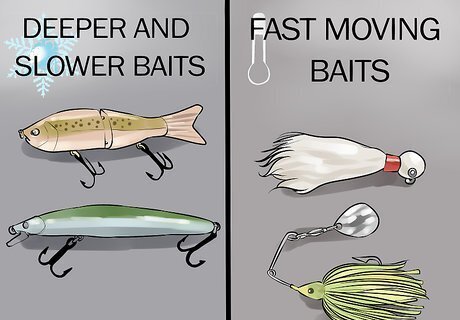
Choose the lure’s movement. In cold water, look for lazier, slow baits like glide baits, jerk baits and jib baits to draw more strikes. In warmer water, use fast-moving baits like bucktails, spinnerbaits and topwaters. When the water temperature is hot, the fish will be sluggish, so use deeper and slower baits. When water visibility is low, look for baits with rattles, large blades, or other mechanisms of creating noise and water movement. Aside from typical auditory organs, muskies also utilize the lateral line, which is a set of sensory organs that run down the length of many freshwater fish. This lateral line system can detect small changes in water movement and pressure gradients created by prey (and lures) when visibility is decreased.

Select a lure color. In clear waters, natural colors and patterns work best. In stained or muddier waters, anglers should use lures that are easier to detect. When the water is clear, “match the hatch.” For example, use perch imitations in waters where perch are the predominant forage, and shad imitations in waters where shad are the predominant forage. When the water has low visibility, opt for bright colors like chartreuse, orange, green, or white. Alternately, choose very dark colors such as black to provide the greatest contrast to dirty water.
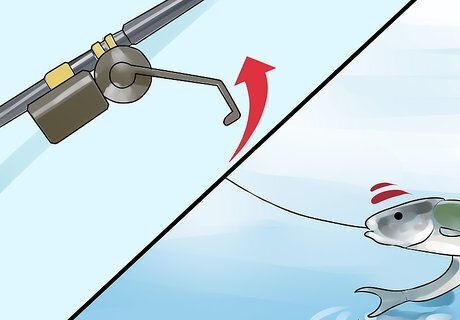
Select a retrieve. Deciding how to retrieve a lure depends on water conditions and fish activity levels. In ideal conditions when fish are active, use a more rapid retrieve. Slower retrieves are necessary in both cold and warmer summer waters. When the fish give you positive feedback by either following your bait or actually biting, try to repeat that retrieval pattern throughout the day and when you encounter similar conditions. Muskie are famous for stalking baits before deciding to strike. While they can often be seen following behind a lure, more frequently they follow just out of site. For this reason, perform at least one figure-eight maneuver boatside at the end of each retrieval. The change in direction often triggers hesitant fish, and the figure-eight itself gives an angler more time to notice a fish closing in on the bait.
Reeling in a Muskie

Use the right tools. Always use sharp hooks. Since large hooks right out of the package are often dull, bring a sharpening tool designed for large hooks. Carry jaw spreaders, needlenose pliers, a long-handled hook remover, and either a mini bolt cutter or side cutters. Bring a cradle, or if that’s not possible, a large net. Try to use a net only if you plan to keep the fish. If you must use a net and you plan to release the fish, your net should have rubber-coated bags to reduce the fish’s mucus loss. A deep net (about 52”) with an opening between 34 and 44 inches should suffice. Make sure to net the muskie head-first. These essential tools will protect the fish as well as you as an angler, since you will be handling the business end of a toothy fish as well as very large hooks.
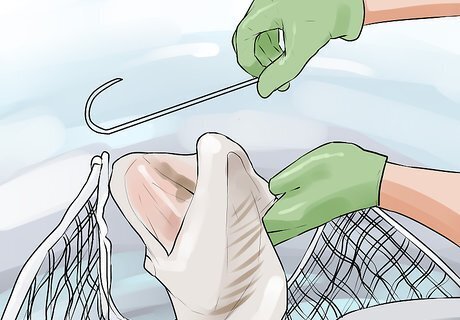
Unhook the fish. Allowing the fish to remain in the water for unhooking and initial handling is essential to the well-being of trophy muskies and the maintenance of our fisheries. Grab the back of the hook with your pliers and lift it. Use a long-handled hook remover to retrieve hard-to-reach hooks. If a hook is embedded too deeply to remove it, use sidecutters or a mini bolt cutter to trim the points off the hook.
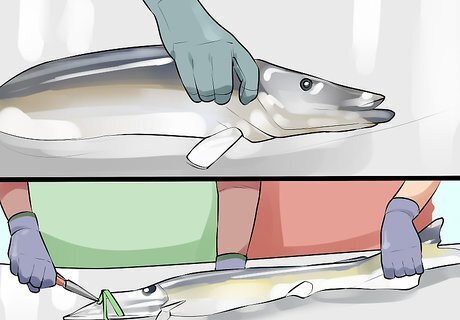
Hold the fish properly. Don’t put your hand in the fish’s mouth or gills to retrieve your hook. If the fish thrashes, its teeth or gill rakers could injure you. Hold a small muskie firmly across its back, right behind its gill covers. If the muskie is large, hold it by the tail and under the body while it’s still in the water boatside, so another person can free the hooks. Do this inside of a cradle, if possible. Always wear gloves when handling muskies. The gloves should be protective fishing gloves that are puncture resistant. Leave the fish in the water within the net or cradle as long as possible, removing it only briefly to photograph or measure it. Despite their size and ferocity, these fish are not known to be hardy and do not tolerate extensive handling well.

Release the fish. You can help preserve the quality of muskie fishing by practicing catch-and-release. Bring a camera with you to take a photo of your catch. Don’t keep the fish unless you are going to have it mounted. Slide the muskie into a cradle to release it into the water, so that it doesn’t injure itself. Revive the fish by rocking it gently back and forth before releasing it. Don’t release the muskie until it remains upright by itself – in other words, it shouldn’t be lying on its side in the water.
















Comments
0 comment